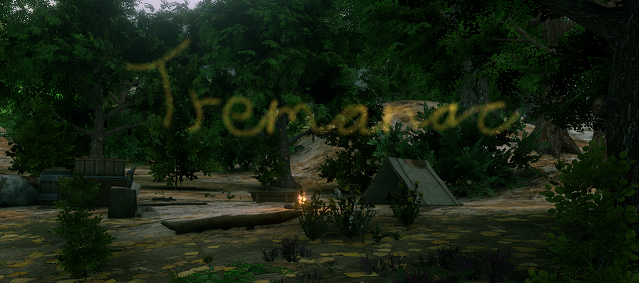Candle Night
A yearly ritual observed on the longest night of the year (1st Lamon) by members of the Church of Seyr.
History
When the nights get longer and the power of the light wanes, fell beasts are known to walk the land. Though they can be repelled by fire, torch, or candle light many of those who live in rural areas do not hav the wood or tallow to spare. In order to protect their congregatios, clerics of Seyr would gather everyone into the nearest shrine or temple so that they could be protected. The able bodied would take turns keeping watch while everyone else would spend the night singing hymns and chanting prayers to help the clerics who were using spells to keep them safe. The following day a feast would be held to celebrate surviving the night.
Execution
The Original Tradition
In rural areas this tradition is practised in the time-honoured way. Preparations begin at midday, with the old and the infirm being carried to the local temple. Wood, torches, candles, and lamps are taken to the church ready for use during the night. Whatever armour and arms that are available in the town are also brought to the church. As night falls, everyone in the settlement gathers in the church and the able bodied are split into watches. After a rendition of The Glory of the Sun the cleric(s) bless those going on watch before beginning the prayers and chants that will ward the church against the dark powers. One watch is sent outside with torches, with another standing by inside, a third resting, and the fourth watch singing or chanting with the cleric(s). Those not in a watch also join in the chants, hymns and prayers. This continues through the night until dawn breaks. The ritual ends with a rendition of Salvation in the Light.The Tradition in Towns
In towns the ritual has become more symbolic as there is less need to fear the creatures of the night. Casual followers of Seyr attend the temple for what is typically an hour long service starting as night falls. Like with the rural one these services start with The Glory of the Sun, but after that the ritual depends on the preferences of the senior cleric and the size of their temple. The more devout followers of Seyr join the clerics in observing the night long ritual. Apart from the members of the watches not carrying weapons, the ritual is largely the same as the rural one, though it is more typical to see the watchers outside holding candles or lamps rather than torches. With less need to enact wards around the temples, the clerics are also able to focus more on creating a spectacle to inspire the faithful, and it is not uncommon for the temples to be bright as day throughout the night. This tends to be especially effective with the stained glass windows on the larger cathedrals. A second hour long ceremony is held at dawn which the casual worshippers can join, though this is typically less well attended than the one the previous evening. In this one, the clerics offer thanks for everyone's survival and it ends with Salvation in the Light. Being watch is seen as a duty for the common good, and all the able bodied are exxpected to participate. Where the local nobility claim to be followers of Seyr it has become customary for them to stand watch alongside their people with titles and rank set aside for this one night.The Feast
In both forms of the tradition a feast is held to celebrate and give thanks to Seyr. The clerics go around telling stories of the heroes of the Church of Seyr, and there are additional services held in the temples. Families typically exchange small gifts though these vary depending on where the ritual is held. In villages and poorer areas the gifts are practical, with things like a knife, a new stool, or jars of preserves common. In towns and wealthier areas candles are usually offered as gifts -to bring Seyr's Light into the home. Candlemakers have made good use of this tradition by producing decorative and scented candles just for this occasion.Components and tools
In both the original and town traditions those on watch wear a tabard bearing the symbol of Seyr on the front and back. A lack of coin means that those practicing this tradition in the rural areas have to reuse the same tabards every year, only replacing them when they are worn out. In the towns they also reuse the tabards from year to year, but in this case it is down to the sense of connection people fell in using the tabard their parents or grandparents used when they took part.
Those joining the clerics in the temples for hymns and prayer are expected to wear an amulet bearing the symbold of Seyr. Many of the participants will wear these on a daily basis anyway, but the clerics keep a few on hand for those who don't.


